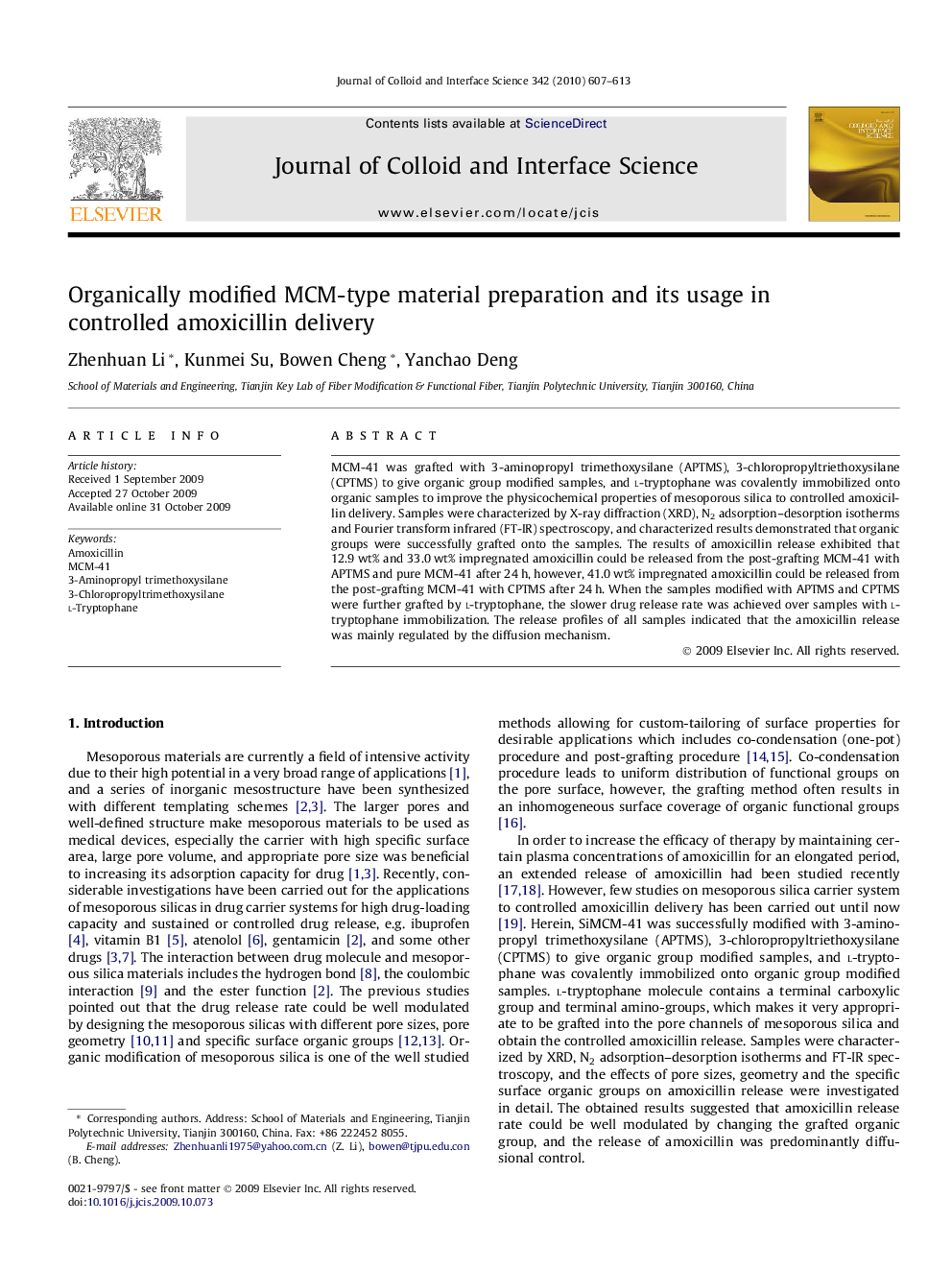| Article ID | Journal | Published Year | Pages | File Type |
|---|---|---|---|---|
| 609565 | Journal of Colloid and Interface Science | 2010 | 7 Pages |
MCM-41 was grafted with 3-aminopropyl trimethoxysilane (APTMS), 3-chloropropyltriethoxysilane (CPTMS) to give organic group modified samples, and l-tryptophane was covalently immobilized onto organic samples to improve the physicochemical properties of mesoporous silica to controlled amoxicillin delivery. Samples were characterized by X-ray diffraction (XRD), N2 adsorption–desorption isotherms and Fourier transform infrared (FT-IR) spectroscopy, and characterized results demonstrated that organic groups were successfully grafted onto the samples. The results of amoxicillin release exhibited that 12.9 wt% and 33.0 wt% impregnated amoxicillin could be released from the post-grafting MCM-41 with APTMS and pure MCM-41 after 24 h, however, 41.0 wt% impregnated amoxicillin could be released from the post-grafting MCM-41 with CPTMS after 24 h. When the samples modified with APTMS and CPTMS were further grafted by l-tryptophane, the slower drug release rate was achieved over samples with l-tryptophane immobilization. The release profiles of all samples indicated that the amoxicillin release was mainly regulated by the diffusion mechanism.
Graphical abstractMCM-41 was functionalized with organic groups to improve physicochemical properties to control amoxicillin delivery, and the release kinetics of amoxicillin was predominantly diffusional control kinetics drug release.Figure optionsDownload full-size imageDownload high-quality image (126 K)Download as PowerPoint slide
